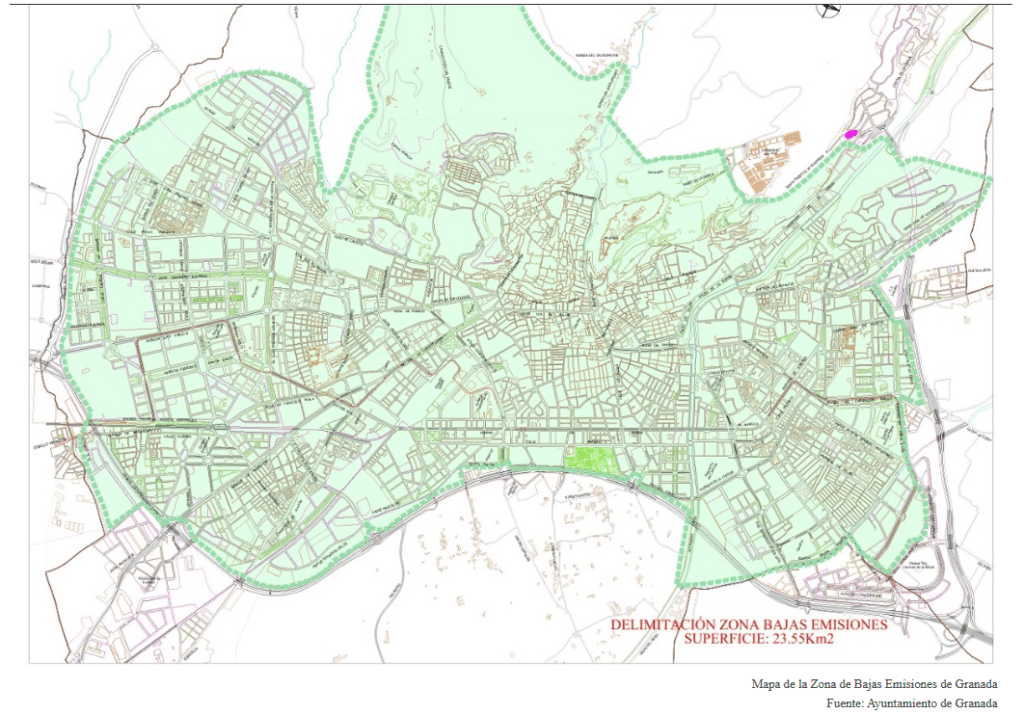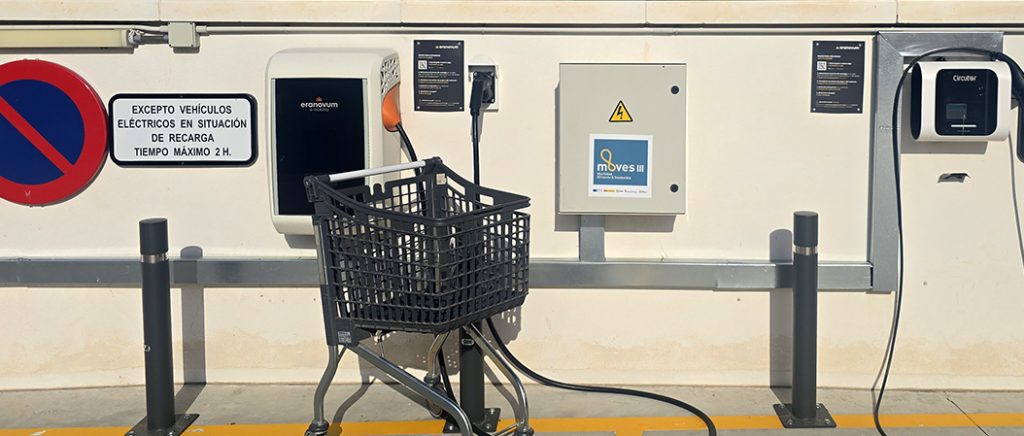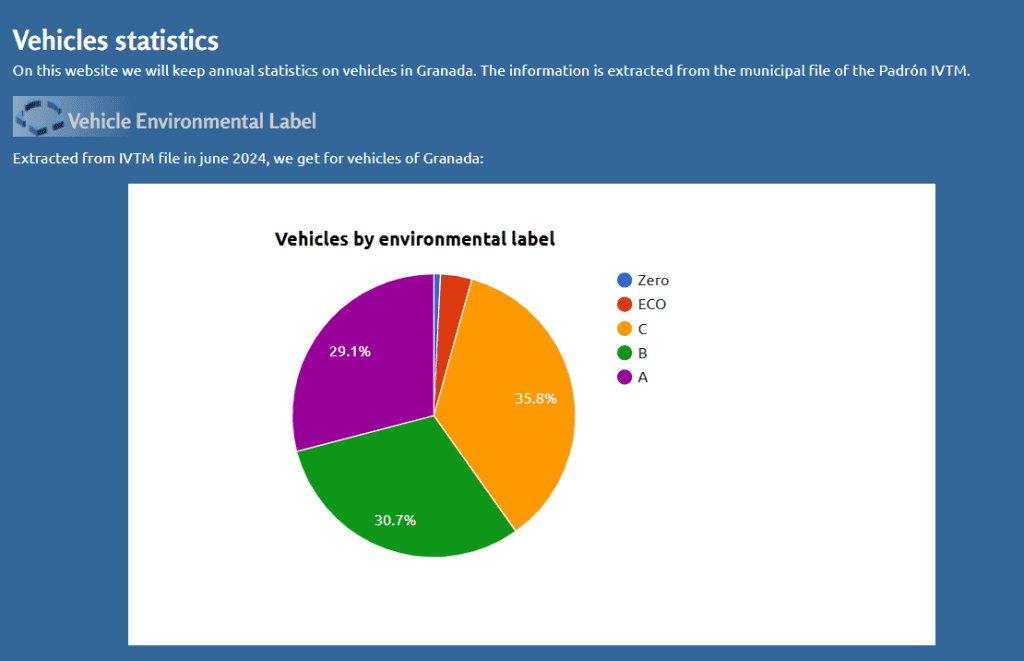WE’VE BEEN here before, haven’t we? For example, two previous examples of “doomed to fail” Spanish law implementations spring to mind. Firstly, the dog welfare laws that were clearly impossible to implement and were ‘kicked down the line’ in September 2023. Secondly, the ‘Solo si es Si’ law, that aimed to improve the sentencing of sex offenders. However, it was repealed in 2022 after sexual offenders walked free, most notably members of the infamous Wolf Pack. The Granada ZBE (although on a local scale) is clearly in the same category!
As well as being almost impossible to implement, it adds more misery for motorists, who already face changing drink drive laws with even more ‘multas’ in 2025.
Why ZBEs?
Spain’s ZBEs – including the Granada ZBE – follow the EU Directive 2019/1161. This decrees we must have low Emission Zones (ZBEs in Spanish). These apply in Spanish municipalities with over 50,000 inhabitants. However, municipalities with more than 20,000 inhabitants are also required to establish ZBEs if they exceed certain pollution limits, according to Spanish law.

Chugging into compliance…
With 2025 being the deadline for implementing these ZBEs, Granada has chugged into compliance. However, its long-awaited ‘zona de bajo emisiones’ (ZBE) has been created with all the grace of a tow truck doing a three-point turn on a goat track. The Granada ZBE is causing a ‘polemica’ (scandal) – and is putting the town hall at loggerheads with neighbouring municipalities. Not forgetting the actual motorists and residents as well!
In an unwanted loophole, the same car registered in Granada City can enter the ZBE, while its “identical twin” from Armilla – a nearby municipality – cannot. Armilla mayor, Loli Cañavate, is calling the scheme “potentially unconstitutional”, citing violations of equality and freedom of movement between municipalities. She claims that nearly 5,000 vehicles in her town – 30% of the total – are suddenly unfit to visit Granada’s health centres, schools or workplaces.
She’s not alone. Other municipalities, including Maracena and Pulianas, have issued similar warnings, arguing that even basic access to hospitals and the ‘centro de salud’ are under question.

Study period turns into delay
Originally set to start April 2025 – i.e. with actual ‘multas’ (penalty fines), not just a traffic movement study or warnings – theenforcement of Granada ZBE was recently delayed until October 1st. The mayor of Granada City, Marifrán Carazo, cited the need for an extended “informative and pedagogical period.”
Some critics argue that this actually means “a political cooling-off period” – because “teething problems” don’t even come close to describing the situation. “Unworkable” might be a better adjective!
Problems include bureaucratic issues (no surprise there!), a distinct lack of charging stations, the prospect of overfilling peripheral carparks, and the revolt brewing in Armilla.
No infrastructure, no clarity – “no va”
Much like offering pellet-burning stoves to mountain-dwellers before pellets were available, the Granada ZBE assumes a certain level of infrastructure for motorists (and their passengers) that simply doesn’t exist. On one local forum, “Eco” vehicle owners report that central Granada car parks “don’t even have a plug, let alone an actual charging station.”
A resident of rural Órgiva complained that some charging stations remain physically disconnected, waiting for the electricity companies to flick the proverbial switch. A diesel “B” sticker minivan owner, also from La Alpujarra, said that the electric charging bays at Al Campo hypermarket were “all empty, while it can be difficult to park at peak times”.
An owner of an “Eco” hybrid 4×4 (a rare sight up rural tracks!) gleefully declared that Armilla’s ‘Centro Nevada Shopping’ is creating 70 new charging stations. “Will there be just two cars parked, while nobody else can find a space anywhere?” quipped the minivan owner.
Furthermore, people living in ‘pisos’ (flats) – i.e. buildings of multiple occupation – may find that there aren’t sufficient (or any) charging stations for the vehicles owned in the block. Granada has many blocks of ‘pisos’. That is a problem!
Meanwhile, the carparks on the periphery of the Granada ZBE – suggested by the town hall for motorists who are disallowed entry – are likely to become overwhelmed daily. What happens when they’re all full by 8am? Where do the other cars go?


City trams – will those help?
Granada’s tram system – the Metro Ligero — currently links Armilla, Maracena, Albolote, and Granada city, running through the university and bus station. However, despite the advent of the Granada ZBE, no new lines are planned. Critics say that the Granada ZBE makes bold claims about sustainability while offering no serious alternatives for commuters.
Many people might not want to “park and ride”, or drag their shopping on a tram. These shoppers, arguably, will simply go elsewhere. They can easily choose a shopping centre (or town) where no ZBE exists, or use Amazon!
There’s also the issue that stores located inside the ZBE that are selling heavier items (furniture, sacks of grain, bathroom supplies?), will rely on vehicles loading the goods directly. These businesses nee customers to be on a “white list” of vehicles allowed to enter the Granada ZBE. Without having a “white list”, commerce will suffer.
How many cars don’t comply?
During the trial phase of the Granada ZBE, from October 2024 to March 2025, the cameras caught 34,500 non-compliant vehicles without environmental stickers entering – roughly 6,700 per day. According to Spanish newspaper, Granada Hoy, around 70% of all vehicles entering Granada are registered elsewhere, with up to 30% of vehicles from nearby towns and conurbations.
Vehicles are graded using DGT-issued stickers:
- Zero and ECO: Electric or hybrid, and welcome to enter every ZBE.
- C and B: Internal combustion engines, newer, and still permitted – even if they are registered outside the province. Their days are numbered, though.
- A (No Sticker): Older, less efficient cars – generally banned unless registered in Granada.


A wall through the province
Another article in Granada Hoy described the ZBE as a “muro invisible” — an invisible wall dividing Granada from the rest of the province.
At present, Granada City has 29.1% of vehicles with no environmental sticker, according to Movilidadgranada.com. It also has 30,000 vehicles aged over 20 years old, as well as a high density of vehicles in general.
With this in mind, the Granada ZBE has been accused of proposing so many exceptions (the “white list”) that its environmental impact could be negligible. Medical workers, disabled drivers, residents, delivery vans, tradespeople, and even those with paperwork pending may all drive inside the zone. One councillor reportedly quipped off-record: “It’s easier to find someone who can drive into the ZBE than someone who can’t.”
The reality of this ‘greenwash’
Granada’s Ayuntamiento has stated – without irony – that it is “fully committed” to the transition but want it to be “gradual, not punitive.” A quote from another council statement reads: “The implementation of the ZBE seeks a balance between sustainability and the social and economic realities of the territory.”
In an area surrounded by mountains and rural tracks, the reality seems to be old, diesel Citroën Berlingos (a local favourite) and guzzly 4x4s happily chugging through the city, while plug-in hybrids park outside empty charging bays. Even those who support the transition – pointing out that the “combustion engine” can’t be tolerated for much longer in these days of climate change – lament the slow implementation and lack of planning.
Realisitcally, how many motorists can afford to upgrade their ancient Berlingo to a new, electric car? And do they want to, really, when they can’t charge it on their usual routes through the mountain villages?
A sensible suggestion is financial incentives to help lower-income motorists upgrade their old bangers to the “Eco” and “Cero2 models. But there are so many “bangers” in this particular region – where will the funding be found?
Europe’s mixed experience
Another issue: are ZBEs really effective? Although they can reportedly reduce nitrogen dioxide (NO2) levels by up to 20–30%, particularly in cities like Berlin, Milan, and London, commerce can take a hit. In France, several cities have suspended the implementation of LEZs because of the impact on local business.
Since the very start, the French scheme has proved controversial. This is because it actively excludes the poorest sections of the population, who are unable to change their vehicles. Both the Left and Right have criticised the ‘spatial segregation’ that occurs under the guise of climate emergency. Does this bode well for Granada?
Where do we go from here?
In principle, cleaner air for Granada’ smoggy urban basin is a decent concept. However, the Granada ZBE rollout reveals a lack of reality and practicality. There is a huge disparity between top-down policy and actual logistics. For now, it seems that the city is in stuck a political ‘cul de sac’ about vehicle mobility. With 14% of Andalusia’s vehicles being over 14 years, and 30% of Spain’s cars lacking any environmental sticker, there is no easy solution. It’s wheely a hard nut to crack (pardon the pun)!
Although the Granada City Ayuntamiento must remain commited to the Granada ZBE, it’s likely that enforcement won’t be too strict – for now. Or, similar to the dog welfare law, enforcement measures will be ‘kicked down the line’ again in October 2025. Perhaps another study will be needed?
